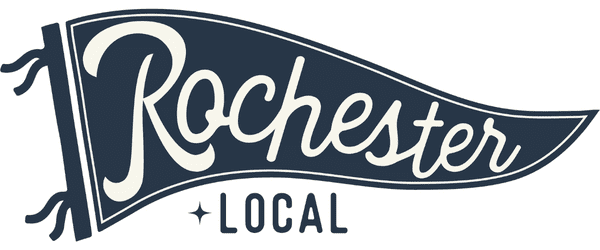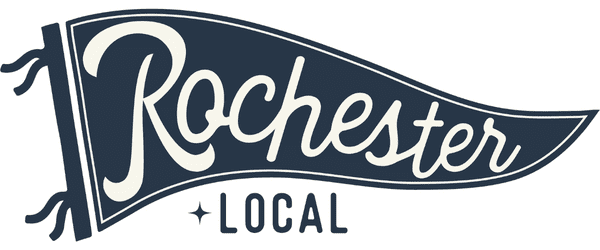This post is sponsored by First Alliance Credit Union

Small Business Loan Requirements and the 5 C’s of Credit
Starting a business takes grit, heart, and a plan. That is where Rob found himself. He had been mowing lawns in his neighborhood for years, building a steady list of clients who trusted him. But now his old mower was breaking down, his truck barely started, and he could not take on more customers beyond his block.
Rob asked the same question many small business owners face: Is my business even strong enough for a loan?
The truth is, lenders do not expect perfection. They expect a clear plan backed by facts. Let’s walk through Rob’s journey and show you what small business loan requirements really look like, using his lawn care business as an example.
Why lenders want a business plan
Rob’s first step was putting his ideas on paper. A business plan does not have to be fancy. It is simply a way to show how your idea becomes steady cash flow.
For Rob, that meant answering questions like:
- Who are my customers? Neighbors, small offices, and homeowners who do not have time for yard work.
- What do they need? Weekly mowing, seasonal cleanup, and winter snow removal.
- How will I reach them at a profit? Word of mouth, flyers, and steady pricing.
A business plan has two key parts:
- Narrative. Rob explained his local market, what competitors charge, and how he stands out with reliability.
- Financials. He listed monthly income from each client, his expenses, and two-year projections showing how a loan payment would fit in.
By writing it down, Rob proved his business was not just a hobby. It was a steady service with room to grow.
Watch & Learn What is a Business Plan & Why You Need One
Mark gives you expert advice on the key sections of a business plan!
The 5 C’s of Credit, clearly defined (and shown through Rob)

Lenders use five common factors to review a small business loan. Here is what each one means, then how Rob demonstrated it.
Character
What it means. Your history of meeting obligations and your overall reliability, often reflected in your credit report and references.
Rob’s proof. He pulled his credit report, disputed one small error, and showed consistent on-time payments.
Capacity: Your ability to repay from business income, shown through pricing, sales, margins, and cash flow.
Rob’s proof. He listed 20 recurring clients, total monthly revenue, fuel and maintenance costs, and a cash-flow line that comfortably covers the loan payment.
Capital: How much of your own money or assets you have invested in the business. Lenders like to see you have skin in the game.
Rob’s proof. He documented savings already put into tools, plus sweat equity from years of steady neighborhood service.
Collateral: Assets the lender can claim if the loan is not repaid. Collateral reduces the lender’s risk.
Rob’s proof. He listed his trailer and mower with realistic values and included the used truck he planned to purchase.
Conditions: External factors that affect repayment, like local demand, seasonality, and supplier costs. Lenders want to see you understand your market.
Rob’s proof. He explained seasonal swings and showed his plan to add fall cleanups and winter snow service to smooth revenue.
Quick evidence checklist you can mirror
- Credit report pulled and reviewed for accuracy
- Monthly revenue, expenses, and a simple cash-flow table with the loan payment included
- Personal funds or assets invested, documented with receipts or bank statements
- Collateral list with realistic estimated values and supporting quotes
- A short market note covering demand, competition, pricing, and seasonality
Documents lenders usually ask for
At first, Rob felt overwhelmed by paperwork. Once he broke it into steps, it became manageable. Here is what he gathered:
- A one-page business plan with financial projections
- Government ID, business registration, and an Employer Identification Number (EIN)
- Two years of tax returns and three months of bank statements
- A simple cash flow summary showing average monthly income
- Quotes for a used truck and mower
- A short write-up of his years of lawn care experience
Organized in a folder, these documents showed professionalism and sped up his application.
Picking the right loan
Rob learned that matching the loan to the need matters. Here is what he considered:
- Term loan. A lump sum with fixed payments. Perfect for the used truck.
- Business line of credit. Flexible funds he could draw and repay. Great for fuel and repairs.
- SBA-backed loan. A longer-term option with government backing. Not the right fit this time, but worth knowing about.
Understanding each type helped Rob avoid borrowing too much and kept his cash flow healthy.
What lenders will quote you
When Rob sat down with his lender, he paid close attention to the terms:
- Annual Percentage Rate (APR) and fees. The annual cost of the loan, including interest and fees.
- Payment and term. How much each month, and for how many months.
- Collateral and guarantees. What secures the loan, and who promises repayment?
- Prepayment details. Whether he could pay it off early without penalty.
By asking simple questions, Rob made sure there were no surprises later.
How Rob strengthened his application
Before he applied, Rob took a few extra steps that made a big difference:
- He opened a separate business checking account to track income and expenses.
- He kept all invoices, quotes, and receipts in one digital folder.
- He started a business savings account with three months of expenses.
- He tracked local demand for a week and collected three notes from office managers promising regular service.
- He used a small business credit card responsibly and paid on time to build history.
These moves showed lenders he was organized, realistic, and prepared.
Rob’s approval

With his plan, documents, and steady client base, Rob’s loan officer could see the path forward. The approval made sense. Rob bought his truck, upgraded equipment, and began serving clients in the next town over.
What started as a question, Is my business even loan-worthy, turned into a clear yes backed by preparation and persistence.
Common mistakes to avoid
Rob succeeded because he did not skip the basics. Many new owners make these errors:
- Guessing about demand instead of researching prices and competitors
- Forgetting to register for sales tax or licenses
- Mixing personal and business money, making cash flow unclear
- Underestimating startup costs and working capital
- Trying to grow too fast without steady income
Avoiding these pitfalls saves stress and keeps your business on track.
Bringing it all together
Rob’s journey shows that small business loan requirements are not mysterious. Lenders want to see a plan, the 5 C’s of credit, and proof that a payment fits your budget.
Your next step is simple. Gather your plan, projections, IDs, and quotes. Open business accounts to keep things clear, then sit down with a business banker who understands local conditions. With preparation, clarity, and support, your loan approval can be within reach.


